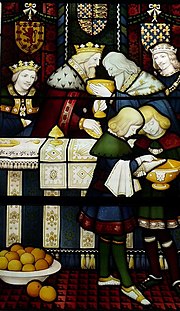

The following is a list of the extant works of Geoffrey Fuller Webb (1879–1954), an English stained-glass artist and designer of church furnishings, based for most of his career in East Grinstead. He was a pupil of Charles Eamer Kempe [1] and Sir Ninian Comper. [2] His work, which draws on the Gothic Revival tradition, [3] can be found in both Church of England and Roman Catholic churches, and in several cathedrals. His stained glass was most commonly commissioned by churches in southern England and the Midlands. It can be identified by his artistic signature, a spider's web, usually placed near the bottom right corner of the window. [1]










